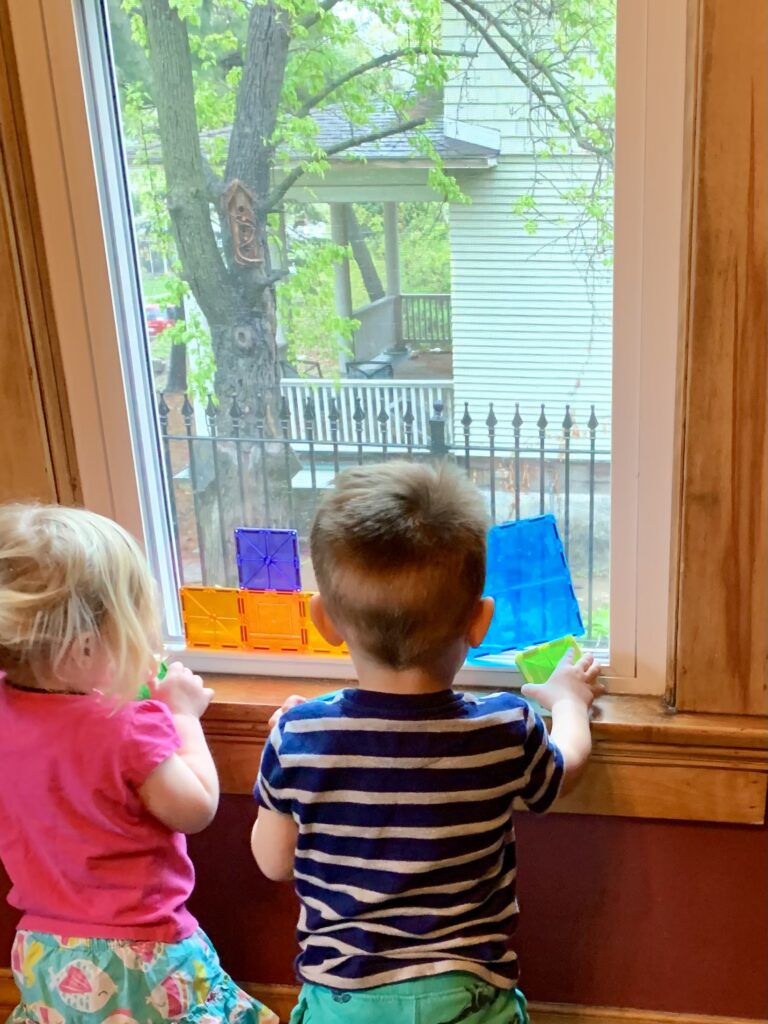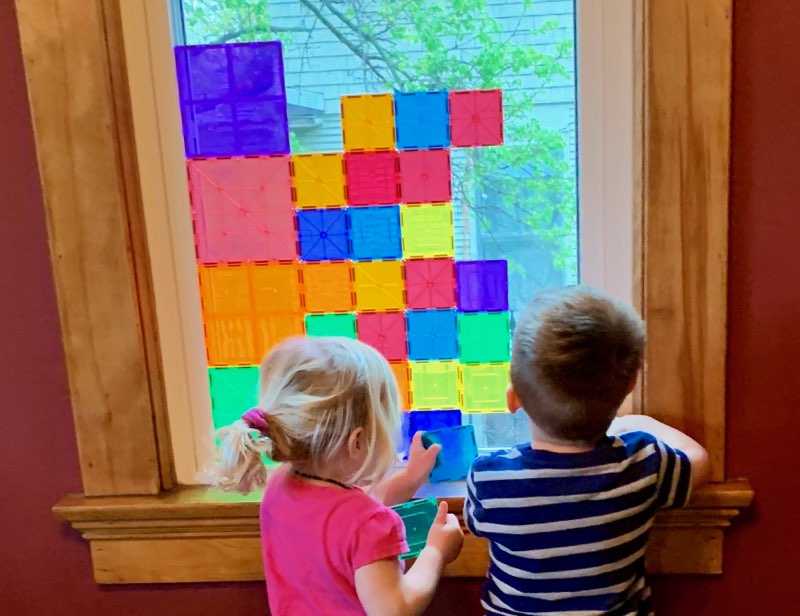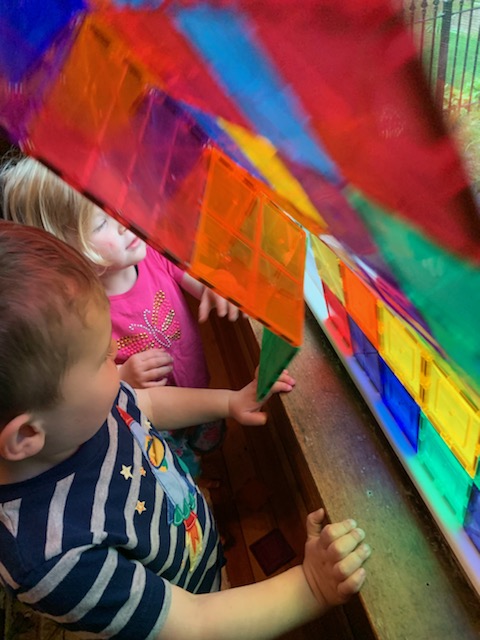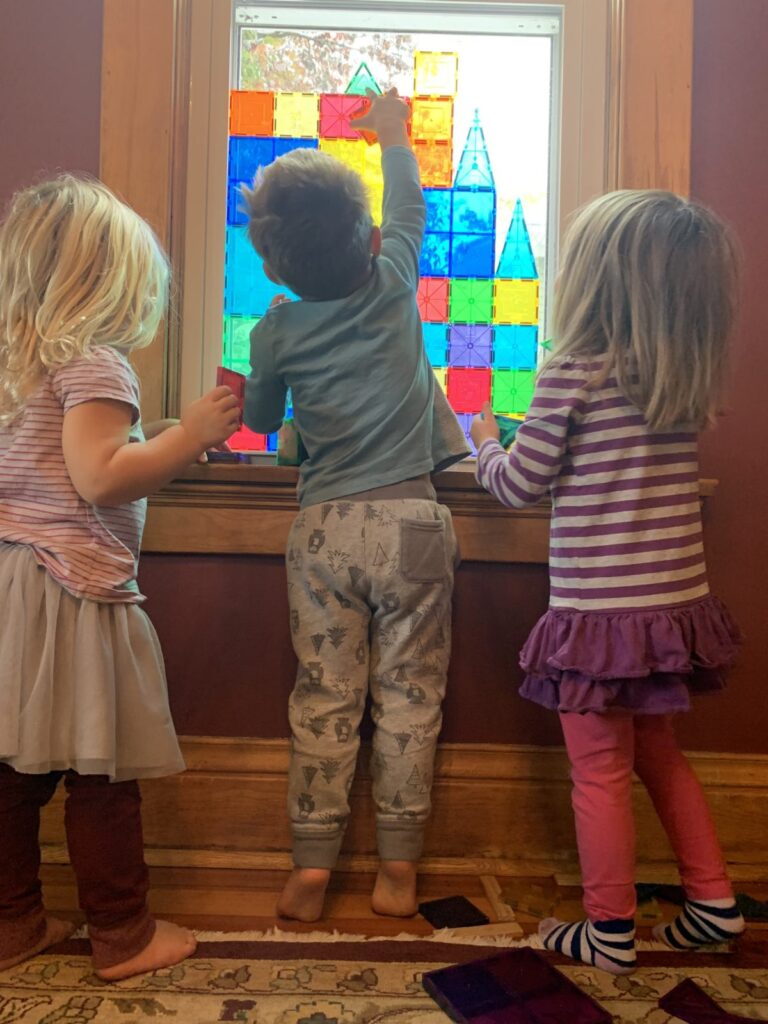Embracing the Concept of “Fast Fail” in Play

Crash! The Magna-Tiles that the children have been stacking against the window come crashing down to the floor.
“Fast fail!” shouts Mallory.
“I think that was a fast-FALL!” quips Noah, our resident punster.
The children giggle and pick up the tiles to restart the stacking process—but only after they share their ideas about what could have contributed to the collapse and what might work better.
“Maybe we should start with the big squares in the corners,” Mallory suggests.
“We need to slow down, too,” five-year-old Porter observes sagely. “If we move fast, we hit the tiles with our hands, and that knocks the whole thing down.”

Fast fail is a term that has made its way into our daily vocabulary. In the world of childhood play, the “fast fail” concept can significantly shape a child’s development.
In business, fast fail (also referred to as “fail fast”) is a management philosophy that encourages employees to test ideas early and often to identify problems and avoid wasting time, money, and resources if an idea isn’t worth the investment.
In the context of early childhood, fast fail has a slightly different meaning. When we adopt this approach, we encourage young children to experiment, fail quickly, and learn from those experiences.
These playful moments help children develop persistence, problem-solving skills, and a willingness to try new things and test the limits of their knowledge.
Science is all about failing. Research any well-known scientist, and you’ll see that they have all had plenty of failures. A new discovery or idea that flopped was actually an important part of the discovery process.
This is why we embrace the fast-fail practice. Scientists learn early on that failure is an essential part of any attempt to understand how things work and why.
Children are natural investigators, and play is how they engage in the scientific process. When they engage in any activity—from building a block structure to trying out a new art technique—they naturally encounter challenges.
By reframing failure, we can help young children understand that any given failure is just one thing they tried that didn’t work.
Fast fail encourages children to dive into a project or a scientific investigation without becoming immobilized by a fear of failure. Rather than being a deterrent, failure becomes a stepping stone, allowing for a brief pause in the action to reflect and make quick adjustments.
This cycle of trial and error fosters resilience: Children learn that stumbling is a natural part of the process, not the end of the play.
It doesn’t mean that the investigators have failed; only that the approach has failed. We can still appreciate the children’s efforts, encourage them to keep trying, and talk about the lessons they are learning along the way.

Persistence is a muscle that needs regular exercise, and play is the perfect way to flex that muscle.
When children build towers or stack items only to see them tumble back down again, their first reaction may be disappointment.
However, if they adopt the fast-fail mindset, that disappointment quickly leads to a new learning opportunity. Children might try different strategies, such as changing the base, adding different materials, or even changing the design altogether. With each attempt, they become better at persisting rather than succumbing to frustration, and they begin to understand that success often comes after multiple tries.
Every failed attempt during play is an invitation to solve a problem. When children face setbacks, their brains are wired to analyze the situation and ask questions such as: “What went wrong? What can be done differently next time?”
This critical thinking process is an essential part of cognitive development. As children navigate challenges, from figuring out how to stabilize a wobbly structure to resolving conflicts with friends, they learn how to think on their feet, change direction, and come up with creative solutions.

One of the most beautiful aspects of the fast-fail approach is that it introduces children to the joys of experimentation. When children feel like it’s safe to fail, they’re more likely to step out of their comfort zones and investigate new ideas.
With this approach, the thrill of discovery wins out over the fear of failure. This makes it easier for children to embrace new challenges and opportunities with an open heart.
The fast-fail approach also teaches children that their skills can improve with effort and perseverance. This understanding enables them to thrive as lifelong learners as they face obstacles head-on.
When you incorporate the fast-fail approach into your early learners’ play, you provide a powerful incentive for growth. By fostering persistence, enhancing problem-solving skills, and encouraging children to embrace new learning opportunities, the fast-fail method gives children the tools they need to navigate any life challenge.
So, the next time you watch a child play, celebrate those little failures: They’re the building blocks of resilience, creativity, and, ultimately, success!

Can’t wait to implement this in playtime!
Yes this will work for my children in the classroom because they live to build
nice read
The toddlers enjoy playing with magnetic tiles already so they will enjoy this activity
I love this idea and will add this activity.